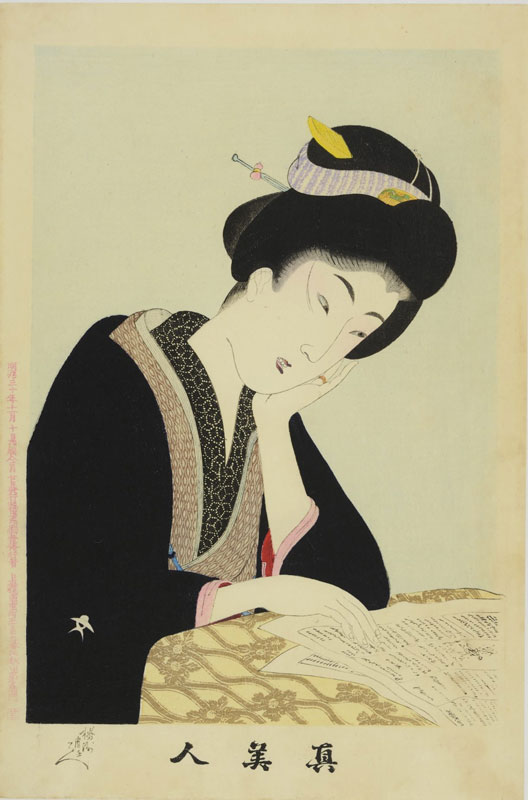
Yōshū Chikanobu (1838-1912)
Shin bijin (New Beauties), 1895
Art Research Center, Ritsumeikan University, Kyoto (arcUP5223)
Meiji Printmaking: Decline, Revival, and Survival Strategiest
- 20 March 2025
- 6:00pm GMT - 7:00pm GMT
- Sainsbury Institute,
- https://www.sainsbury-institute.org/events/meiji-printmaking-decline-revival-and-survival-strategies/
- 01603 597507
- sisjac@sainsbury-institute.org
- Tweet
THIRD THURSDAY LECTURE - SAINSBURY INSTITUTE
Dr Ryoko Matsuba (Sainsbury Institute for the Study of Japanese Arts and Cultures)
About the Talk
Focusing on the Meiji period (1868–1912), this paper investigates how Japanese print publishers and authors adapted Edo-period (1608–1868) formats and technologies to address shifting cultural and technological demands. When woodblock printing declined in the 1880s, publishers adopted copperplate engraving (dōban) for children’s books, combining cost-effective methods with traditional imagery. Central to this enquiry is kusazōshi, Edo-era narrative fiction that seamlessly integrated text and illustration. By examining how children’s literature facilitated the survival of kusazōshi aesthetics amid evolving print technologies, this paper reveals a continuity of format that underpinned Japan’s visual storytelling, thereby preserving Edo artistic practices into the twentieth century.
Simultaneously, the production of fukusei (facsimile reproductions) arose to meet foreign demand in the 1880s, and as domestic printmaking declined, it helped sustain traditional techniques. By charting the industry’s transformation and its innovative strategies—both domestic and global—this paper illustrates how Meiji publishers navigated rapid modernisation, upheld Edo cultural heritage, and paved the way for modern Japanese popular publications. Through this analysis, it uncovers the complex interplay of economic imperatives, cultural conservation, and technological progress that characterises Meiji printmaking’s decline, revival, and enduring survival strategies.
In-person lecture at the Sainsbury Institute and online via Zoom.
50 min lecture followed by Q&A.
Free and open to all, booking essential.
